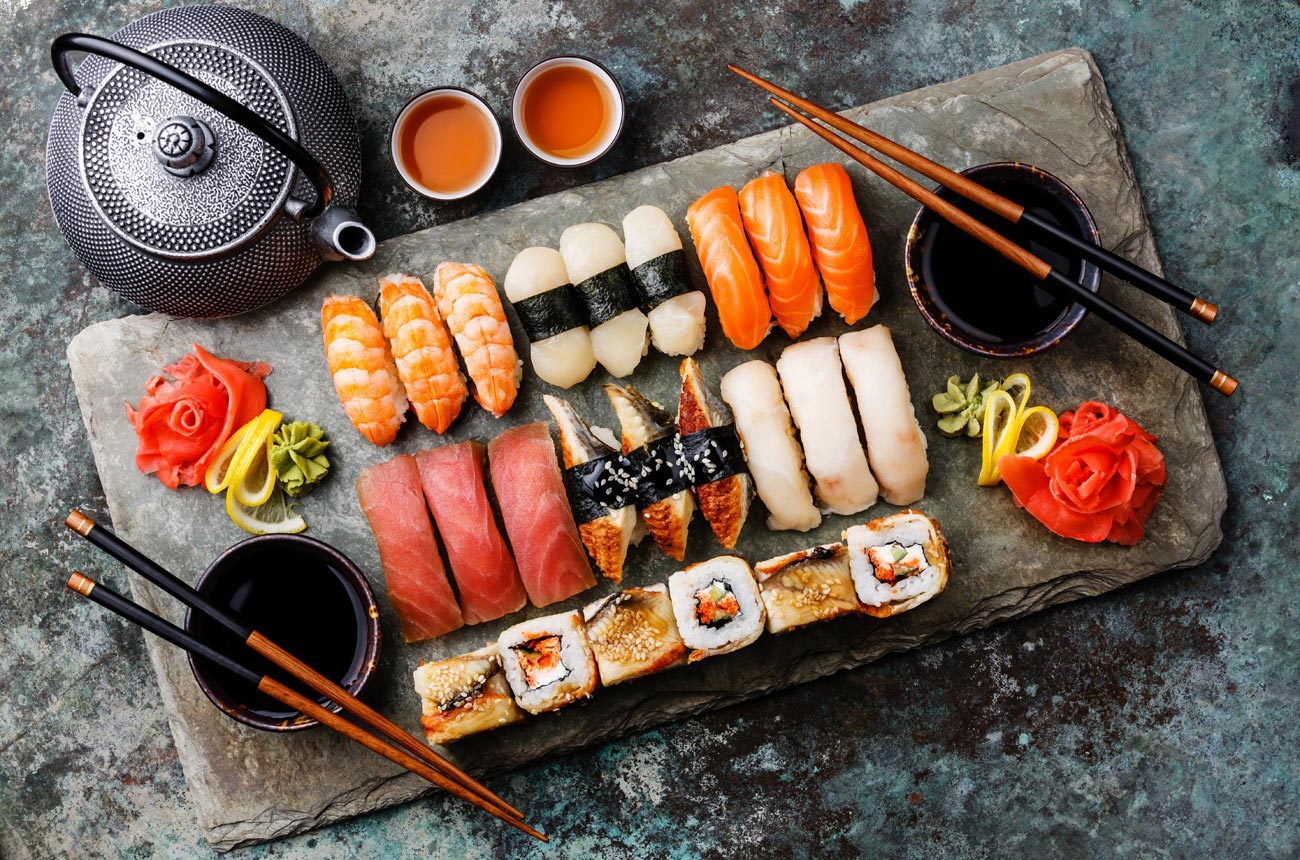

MASTER'S BOOK
JAPAN: CULINARY CUSTOMS AND TRADITIONS
Traditional Japanese cuisine
The Japanese are serious both about the taste and the look of their food. Eating always involves a certain ceremony: Japanese dishes are always eaten in a specific way. The culinary culture is present in all aspects of Japanese life: in legends, proverbs, ancient rites, idiomatic phrases and stories passed down from generation to generation. The Japanese pay great attention not just to the taste of food, but also its aroma, as well as visual and tactile food experience. Japanese cuisine uses a number of seasonings and add-ons carefully selected for each dish. Dishes are delicate in taste and aroma, as the Japanese avoid extreme tastes and aromas but prefer to use only the basic seasonings, such as salt, sugar, pepper, soy sauce, wasabi (Japanese horseradish). These are intended to bring out the natural taste of food, making its flavour full and distinctive. Due to the spare use of seasonings, Japanese cuisine may be viewed as bland, but gourmets praise the natural taste experience. Another thing to note is that the Japanese are quite serious about food classification: they distinguish a great number of different noodles, fish, fruits, alcohols, vegetables and rice. Thanks to the principles of Japanese cuisine, it is known as one of the most balanced and healthiest ones in the world.
Classification of Japanese dishes
Japanese cuisine can be divided into several groups. First of all, there are dishes served cold, known as namasumono. Other groups include cooked dishes (nimono), grilled dishes (teppanyaki), roast dishes (yakimono) and fried dishes (agemono). Then we have salads (sunomono) and fermented dishes (tsukemono), and finally rice dishes (gohanmono) and sushi.
Japan’s favourite dishes
The Japanese have a distinctive cuisine that has become popular all over the world. Japan is known for its delicious seafood, vegetables, rice and noodles. The best known Japanese dishes include sushi, ramen, okonomiyaki, dried fish, beef, pork and poultry, takoyaki, gomae, green tea desserts and miso.
Japanese sushi is unique for its variety of tastes, as well as the number of fish species and vegetables added to this popular dish. Sushi combinations are becoming increasingly interesting in ingredient selection, taste, aroma and colours. World-famous ramen soups are another example of Japan’s favourite food. Ramen noodles originated in China but have won the hearts of Japanese families. Miso, a traditional soup based on fermented soybean paste, is equally popular. Okonomiyaki or cabbage pancakes filled with any ingredients are also ranked high in Japanese cuisine. Combined with appetizers, such as takoyaki or gomae, they provide healthy and nutritious Japanese meals, which traditionally include a bowl of rice, a bowl of soup and three dishes selected from any dish group.


















